It has not been as easy to acquire native plants as it is to acquire non-natives here in Central NY. Still, though, we have more sources available than in the past, and we’ve managed to create quite a collection from a variety of sources.
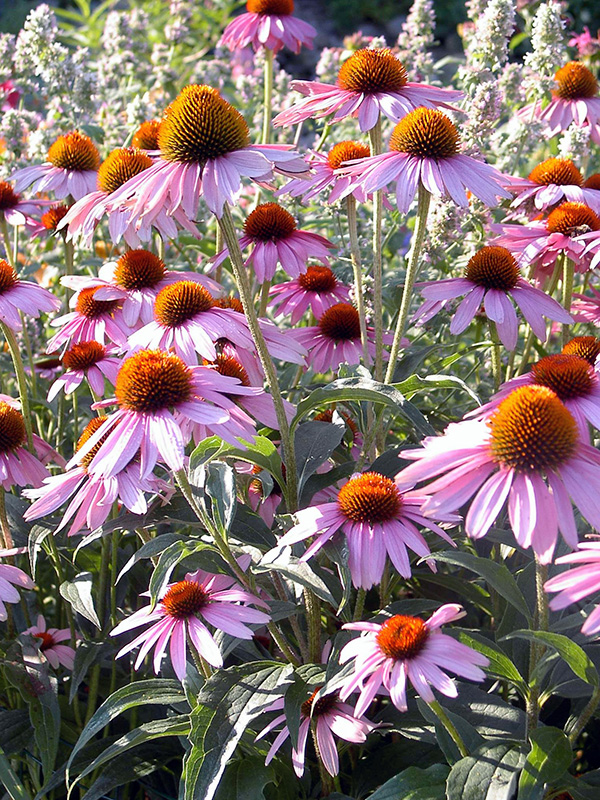
In the past, we bought plants from local nurseries and the CNY Regional Market (usually cultivars since that’s all they had), from Prairie Nursery, from the New England Wildflower Society’s Garden in the Woods, and from vendors at Millersville Native Plants in the Landscape conference.
People have also given us plants, such as these coneflowers, and we’ve divided plants as they mature.
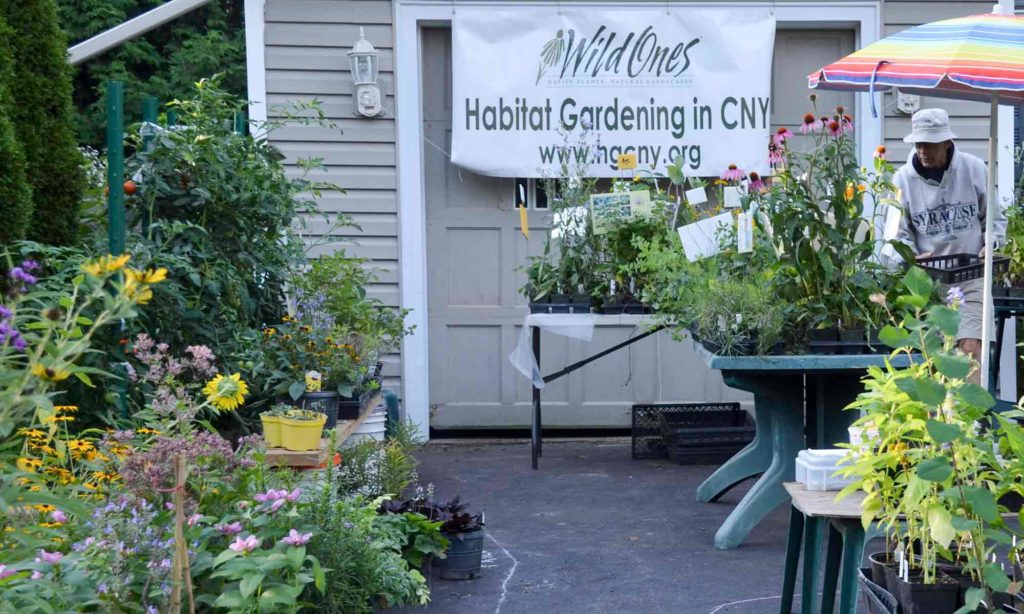
Now, though, we’re able to buy natives from our own Wild Ones chapter, the HGCNY plant sale.
This also has the advantage that we’re supporting and promoting local native plant nurseries (as well as our Wild Ones chapter), and they more often have local ecotype plants, not just plants purchased from industrial horticulture businesses.
We’ve also grown some from seed. Learn more about growing plants …
IMPORTANT: The one thing we have NOT done is collect plants from the wild! This is unethical and unsustainable! We’re trying to create a healthier planet, not just an inexpensive landscape for ourselves.
Buying new plants
Small plants or plugs
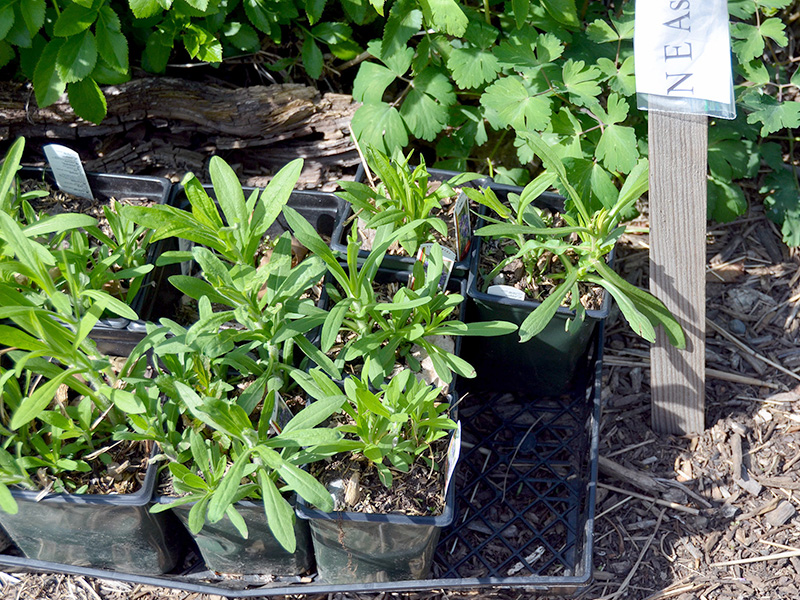
It might not seem as satisfying to plant small plugs rather than full-size plants, but there are advantages. Of course, lower cost is a big advantage, but small plants are also less prone to transplant shock. And it’s amazing to see how quickly many herbaceous plants can grow, sometimes even flowering the first year.
If you’re used to commonly-sold bedding plants such as petunias or marigolds, this may not seem so amazing, but not all natives grow as quickly. On the other hand, since they’re perennials, they don’t need to be re-bought and replanted every year — a huge time and money saver!
Small trees and shrubs
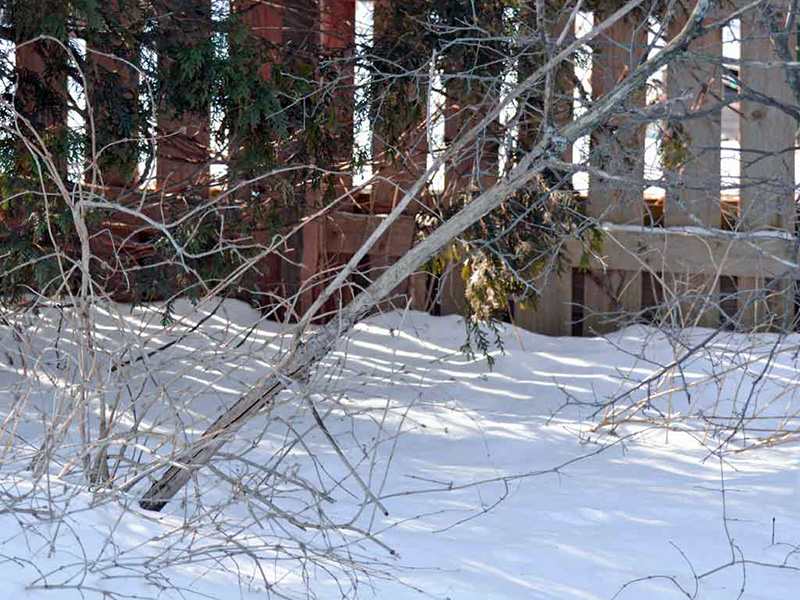
Many years ago, we bought a pretty much fully-grown pagoda dogwood for our back yard. We wanted an instant landscape! After a few years it died, probably from transplant shock. At least this dead tree functioned as a convenient bird perch for many years before finally keeling over.
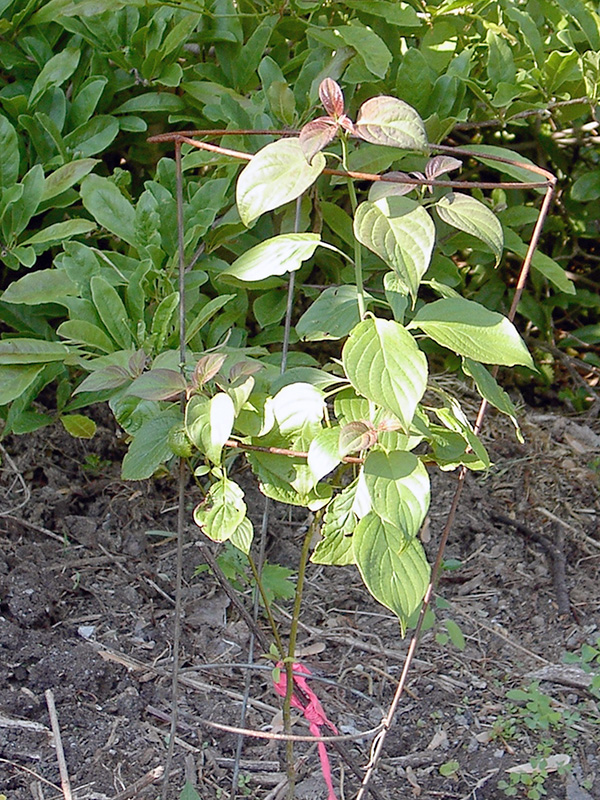
Then we planted this seedling pagoda. It was just about the height of the tomato cage it was in, but four or five years later, it was virtually fully-grown and robustly healthy. It not only was much cheaper than the full-grown dogwood we had bought, but it had quickly surpassed it in height and productivity.
We’ve been amazed at how quickly young trees and shrubs can grow. It’s not only cost-effective to buy these seedling trees, but they can quickly catch up to or even surpass more mature trees that have to recover from being transplanted.
Not all trees would grow as fast as this understory species, I suppose, but it’s pretty clear that trees or shrubs that don’t have to contend with being transplanted have a big advantage.
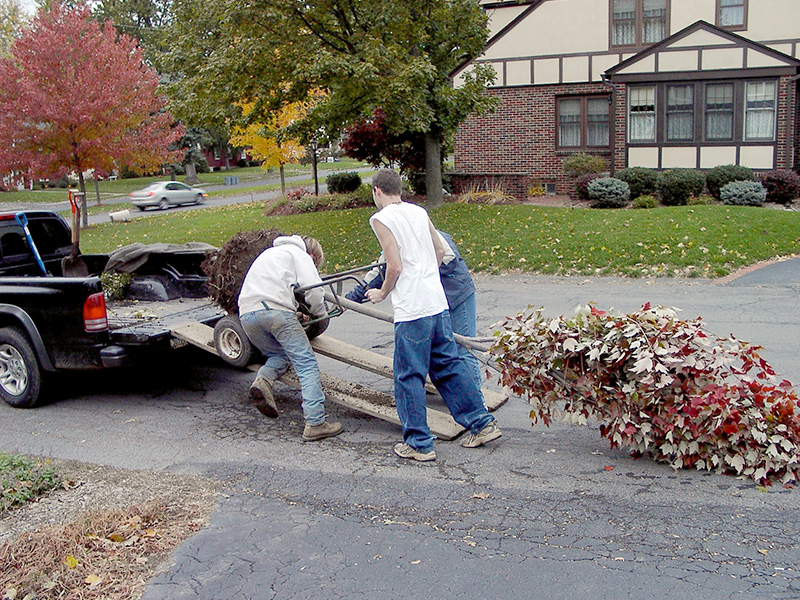
And larger specimens sold by conventional nurseries, such as this maple, frequently have their roots contained in a metal cage, and at least in our case, the landscaper planted this large tree in its metal root cage! (We removed it when we built the pond, but it had been there for a few years already — still in its cage!)
Bareroot plants
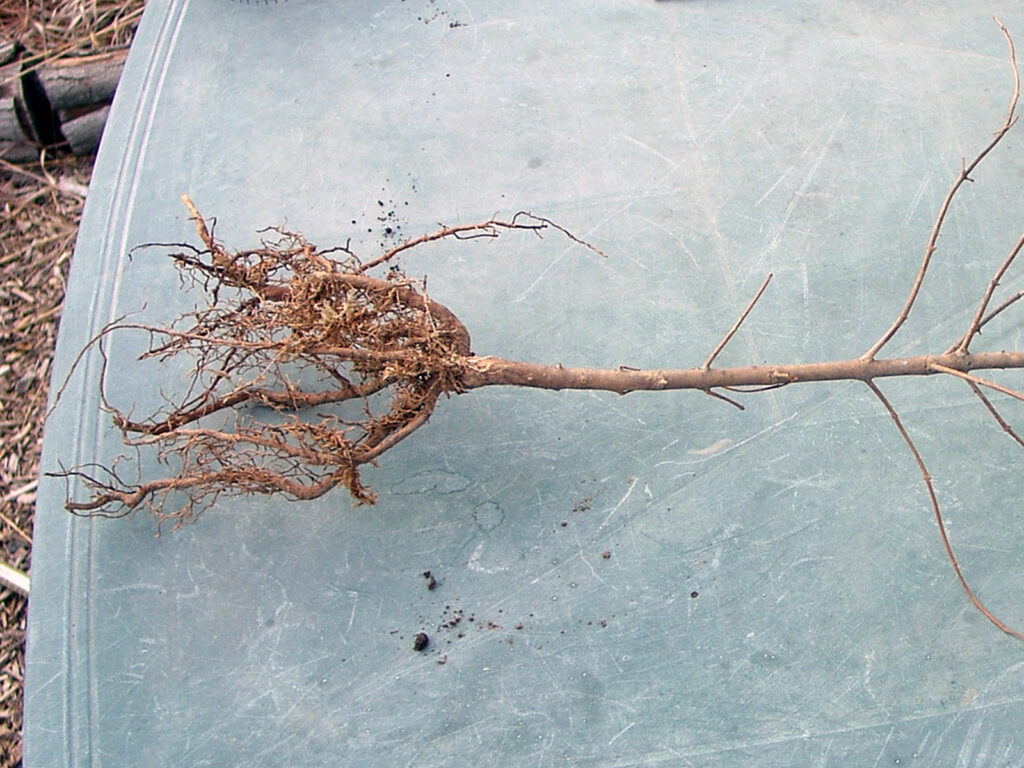
We experimented with planting a bare root plant, in this case a black haw viburnum.
Bare root plants are much less expensive and easier to plant. And now with the invasive worm problem, it’s a less risky way of acquiring new plants without these pests (though it’s probably a good idea to check for worm cocoons and rinse the plant well).
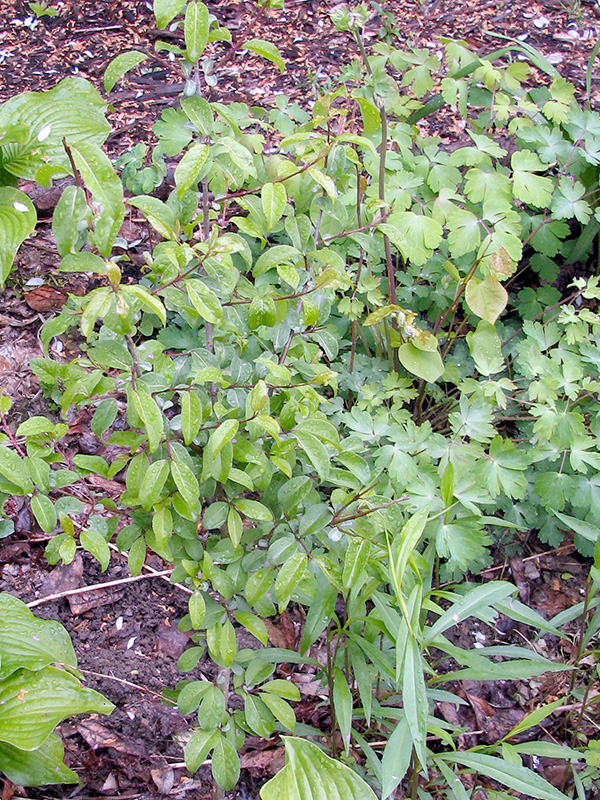
As unpromising as that bare root stick looked, it sprouted leaves very quickly.
The photo shows the black haw the following year. After about five years, it was about 6 feet tall and flourishing.
If we had an acre to plant, we’d plant more bare root plants, but for the few trees and shrubs we have space for, we buy young tree and shrub seedlings from our local native plant nursery at our HGCNY Wild Ones plant sale.
CAUTION! Some plants are mislabeled!
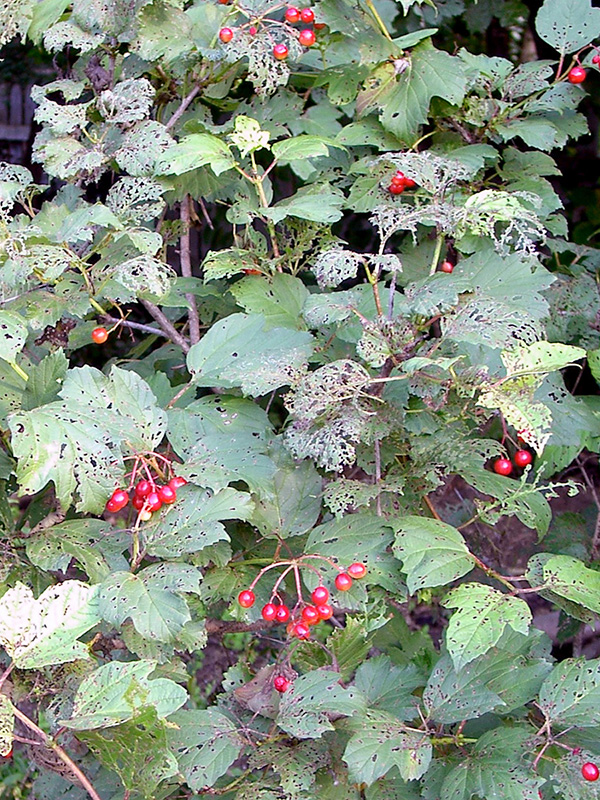
We thought we had planted a highbush cranberry viburnum (not a real cranberry), and just as it was recovering from the leaf beetle, we determined that it was instead probably the non-native variety.
The European variety is Viburnum opulus and the native variety is Viburnum opulus var. americanum. This plant is often misidentified on the label as the American highbush cranberry, so it’s worth checking carefully before planting! We have since removed this plant.
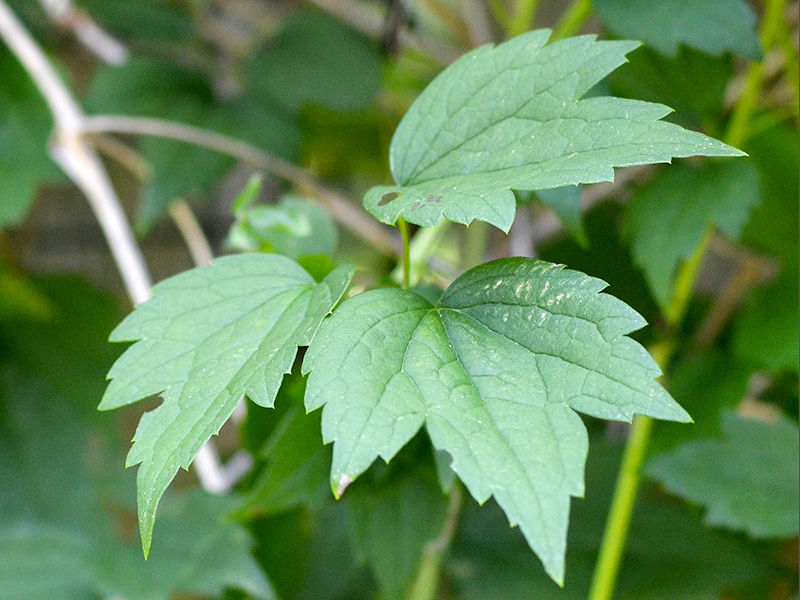
Virgin’s bower (Clematis virginianum) is also frequently mislabeled. The leaf shape is a good identification clue. The pictured leaves are those of the native vine.
The non-native look-alike is C. terniflora, a non-native invasive that shouldn’t be planted, though it’s the one most often sold!
The bittersweet vine is also frequently mislabeled. This is perhaps a more serious problem since the oriental bittersweet sold as the native variety is an invasive plant. It’s often spread by berries falling from people’s holiday decorations that feature the colorful fruit. If you buy a bittersweet vine, learn how to distinguish between the Oriental version and the native one! See the Resources section below for tips on how to distinguish these two plants.
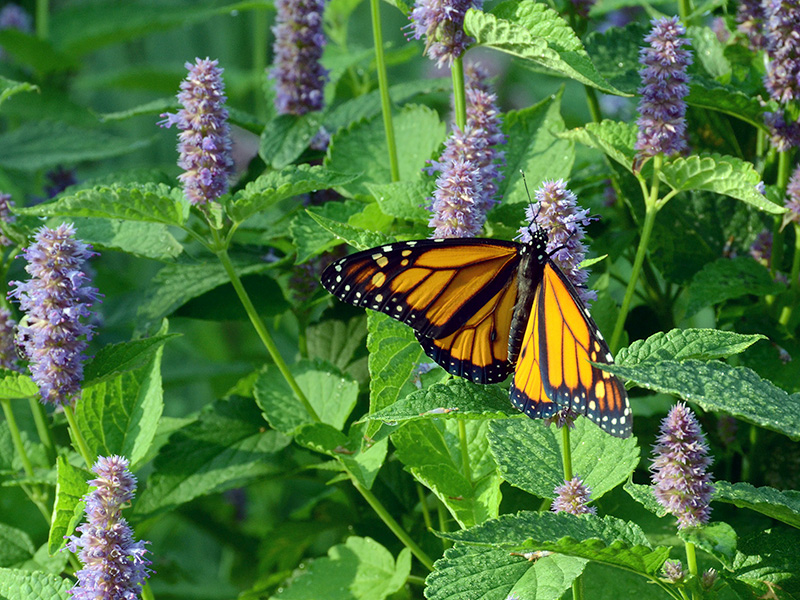
It was especially distressing to learn (in 2021) that many of what we thought were anise hyssop (Agastache foeniculum) were frequently mislabeled and actually were Korean hyssop. This seemed to be true even for plants in native plant nurseries, which themselves were fooled.
This has been one of our favorite plants that many creatures used!
Bottom line: Find a responsible, knowledgeable native plant nursery you can trust! Our local Habitat Gardening in Central New York Wild Ones chapter publishes a free Native Plant Shopping Guide each year listing reputable native plant nurseries in our region and which specific plants they’re offering each year. And if you’re not in Central NY, Wild Ones has a native plant nursery list for other parts of the country.
Resources
- White Oak Nursery:
- Minnesota DNR:
- Oriental bittersweet – tips on distinguish between native and non-native bittersweet
- Big River Big Woods:
- Buyer beware! – EXCELLENT descriptions and photos of native/non-native hyssop, bittersweet, and viburnum that are frequently mislabeled
- MC-IRIS:
- Univ. of Maine:
- Highbush cranberry – the FAQs for distinguishing between European and the native
Reflections
Man has been endowed with reason, with the power to create, so that he can add to what he’s been given. But up to now he hasn’t been a creator, only a destroyer. Forests keep disappearing, rivers dry up, wild life’s become extinct, and the climate’s ruined and the land grows poorer and uglier every day.
~ Anton Pavlovich Chekhov, Uncle Vanya, **1897**
